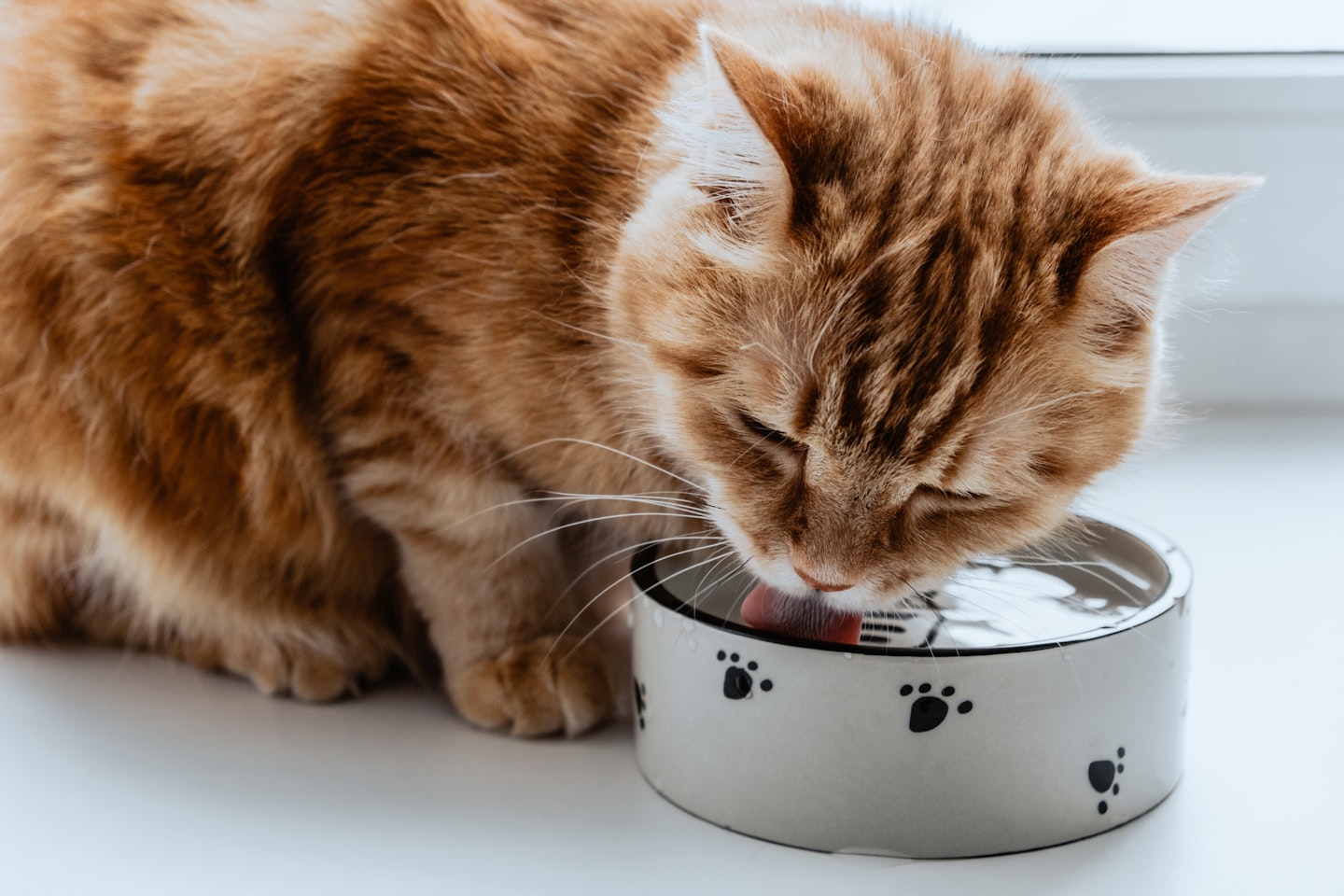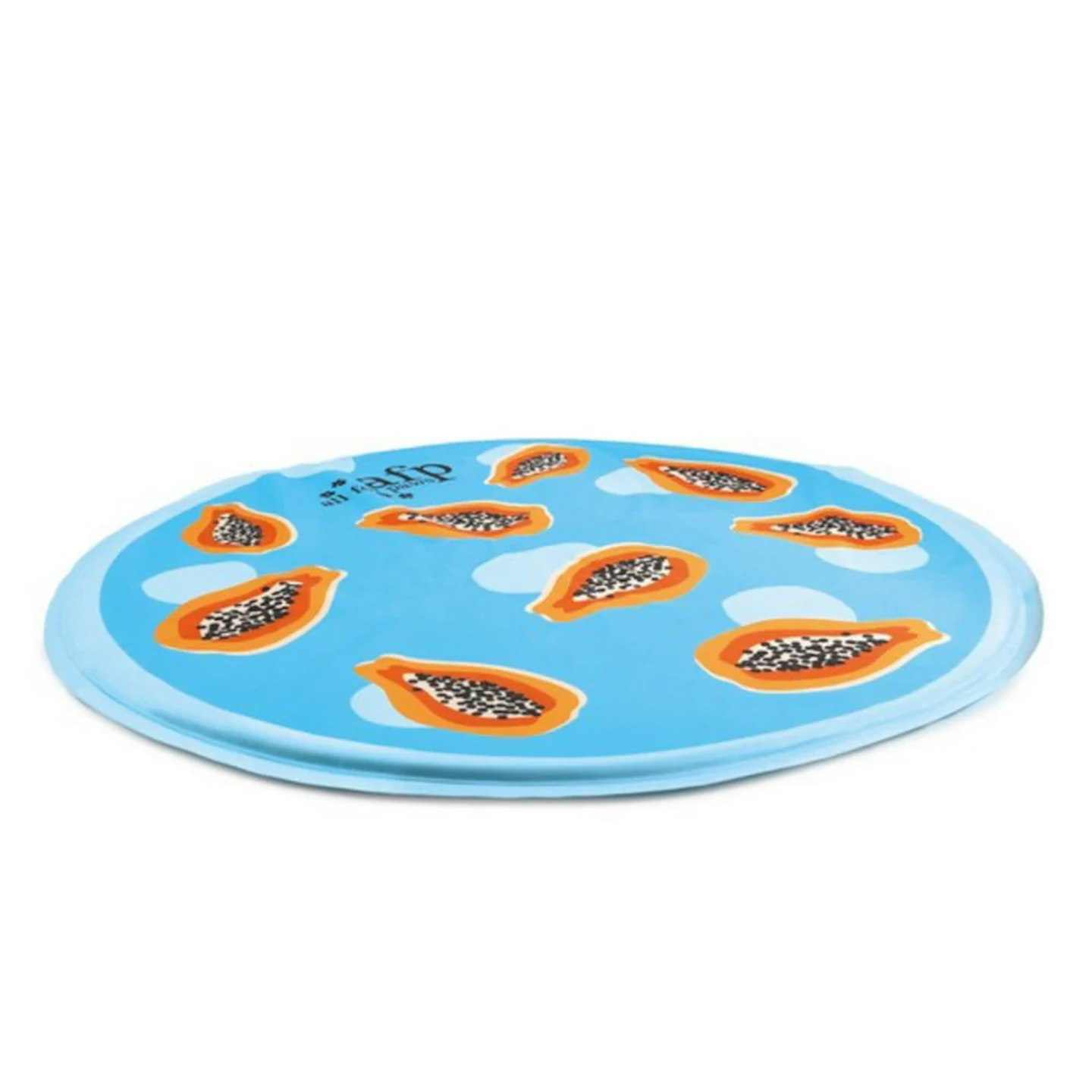Hot days can be fun for the family with inflatable pools, portable fans and cooling lemonades or cocktails while you relax. But warm weather can sometimes be challenging for your furry friends, especially cats who refuse to get themselves wet under any circumstances.
During those extra hot days, it is handy to know how to cool down a cat effectively to ensure your kitties are having a fun time too. To get some expert advice on this, we spoke to Samantha Prior, Cat Behaviour and Training Specialist at the Woodgreen Pets Charity and Lynne James, Vet at the PDSA (The People's Dispensary for Sick Animals).
Cats usually lick themselves, breathe out or laze around snoozing in the shade to regulate their body heat when temperatures rise. But sometimes it is still important for us to keep an eye out to see if they are doing okay.
“In warmer weather, cats can be at risk of dehydration and heatstroke, which is an extremely serious condition. Symptoms can develop quickly and may have fatal consequences,” says Lynne James.
“Every cat reacts to hot weather differently and how hot is too hot for your cat will vary depending on lots of different factors, including how accustomed they are to warmer temperatures, their health, body size, activity level, as well as how humid it is.”
“Pets that are young or elderly, unwell, overweight or have dense coats are also at increased risk,” she adds.
It is also important to pay special attention to cats that are long-haired, obese or ones with medical issues such as heart disease.
What temperature can cats tolerate?
“On average, it’s recommended that between 15 and 26 degrees is a comfortable living condition for cats. Any temperature over this is when we would suggest giving them support to keep cool,” says Samantha Prior.
“In addition to heatstroke and dehydration, too many rays can result in sunburn as well. Cats’ ear tips, noses and eyelids tend to be much more exposed, and on hot days they be protected with a pet-safe sunscreen. It’s especially important to protect your cat from the sun if they are white, ginger, hairless or have a particularly thin coat because they are much more likely to burn. For some furless breeds, including the Sphynx cat, it’s best to keep them indoors during the hottest parts of the day,” Lynne James adds.
How do I know if my cat is hot?
There are several signs to watch out for to see if your cat is suffering from heatstroke:
-
Panting or having trouble breathing which needs a phone call to your vet right away
-
Drooling
-
Being excessively lethargic
-
Dry mouth and gums
-
Vomiting
-
Diarrhoea
-
Low energy, unsteadiness or collapsing
-
Seizures
If you are concerned your cat is suffering from heatstroke, the most effective way to cool them down is to gently pour cool water over their body, being careful to avoid their nose and mouth – most cats dislike water, so do take this slowly. Following this, expert Lynne James advises to contact your vet as soon as possible.
What are some top tips to keep cats cool during the summer?
“Some cats enjoy basking in the sunshine, but it’s always worth providing shaded spots for them to retreat to when it gets hot. You can easily keep your cat cool by placing extra plant pots around your garden, as well as cat-friendly plants,” Samantha Prior says.

Trees and shrubs make great natural shade, or you can make your own shady spot by hanging sheets or blankets to create a DIY sun den for your pet.
“Put out an extra bowl of water for your cat and make sure it’s topped up throughout the day. I’d also advise keeping cats indoors between 11am and 3pm, the hottest part of the day,” she says.
“Contrary to popular belief, it’s important to keep doors and windows closed during the day, to protect you cat. Only open them first thing in the morning and in the evening because glass acts as a radiator and the sunshine bursting through your house will quickly hot up a room. It’s also a good idea to switch on a fan in the room to circulate as much cool air as possible,” Samantha Prior adds.
Is it okay to give cats ice cubes?
As long as your cat is healthy, providing a few ice cubes to play with or in their water bowl is a great way to cool them down.
“If you’re going to give your cat ice cubes, first make sure the cubes are an appropriate size to avoid choking – they shouldn’t be a size that risks getting caught in their throat. If your cat has a tendency to wolf down their food, ice shavings may be more suitable as these smaller pieces will melt faster, reducing the risk of choking as well as minimizing harm to your cat’s teeth,” says Lynne James.
“Another option is to fill a bowl with water and freeze it - this will be too large for your cat to get hold of with their teeth, but they’ll be able to lick it, keeping them cool for longer,” she adds.

In addition to this, she suggests creating a cool environment for your pet with some easy hacks.
“You can place them on a cold, wet towel to help cool them further, but don’t put the towel over them as this can actually hold heat in,” says Lynne James.
You can also use a cool mat for your cat to lay on if they wish. Alternatively, simple hacks like frozen water bottles wrapped in towels are inexpensive ways to help them stay cool, adds Samantha Prior.
Do cats like fans blowing on them?
It is best to allow them the choice of being near it or keeping their distance, but having one set up in the home can definitely help to cool down a cat.
The best products to cool down a cat
“Products like cooling mats, pet-friendly garden water fountains, water-based toys and ice moulds are all great options for keeping your pet cool. However, always supervise your furry friend to ensure they don’t chew an ice pack or cooling mat, as the contents can be harmful,” says Lynne James.

pdsapetstore.org.uk
The All For Paws Dog Cooling Mat can help keep your furry friends cool with its unique lining filled with cooling gel, providing a cool surface for your pet without the need for refrigeration. This saves you a lot of hassle and you can simply place the mat on a flat surface for your cats or dogs to use. This mat is also made with safe and non-toxic materials so you don’t have to worry about your pets chewing on it.
Pros
- Lined with cooling gel so it does not need refrigeration
- It is made with safe and non-toxic materials
Cons
- It is only available in one colour and pattern
The Bravpet Pet Cooling Mat is comfortable, strong and chew-resistant making it the perfect option to keep your pets cool on hot days. The material is easy to clean and non-toxic which is safe for your pets. It also does not need to be chilled as it is self-cooling. It is also available in 2 sizes to choose from.
Pros
- Chew resistant
- The material is easy to clean and non-toxic
- Self cooling and does not need to be chilled
- It is available in 2 sizes
Cons
- No colour options to choose from
Do cat cooling mats work?
“Cooling mats can be a practical way of keeping your pet comfortable in warm weather. Usually lined with a cooling gel, these mats provide a cool surface without needing a refrigerator,” says Lynne James.
What to feed cats in hot weather?
According to Samantha Prior, cats should just be fed their normal diet in hot weather.
“You may find their appetite changes slightly and they eat more once it has cooled off. The most important thing, though, is to have multiple fresh water sources available for them to go to,” she says.
You can also make tasty treats at home to keep your cats cool like frozen patties with their favourite wet food or frozen tuna popsicles.
“Please don’t give milk, as this can cause an upset stomach, leading to your cat becoming dehydrated quicker. Water sources are especially important if your cat is fed on a diet of dried biscuits only. This is because they won’t be gaining any liquid from dry food as they would from wet food,” she adds.
For any multi-cat homes, it is also important to provide multiple water sources and cool/shaded areas away from each other, so your feline friends can choose where they go and how close they sit to each other.
Meet the experts:
Samantha Prior is a Cat Behaviour and Training Specialist at the Woodgreen Pets Charity. With over 14 years of experience working with cats, she is also equipped with a COAPE Diploma in Practical Animal Behaviour and Training. She is an expert at giving them hands-on care and offering advice to cat owners to improve the quality of their lives.
Lynne James is a practising vet at the PDSA (The People's Dispensary for Sick Animals). With over 20 years of experience working as a veterinary surgeon in both the UK and Canada, she has been managing a team of vets and nurses, writing pet health and welfare content, and coproducing the PDSA Animal Wellbeing (PAW) Report. She has also been actively involved in working with charities and animal welfare organisations to improve the lives of pets in the UK.
Akhila Thomas is a digital writer at Yours.co.uk and her areas of interest are beauty, fashion, food, wellness and lifestyle. She has previously written for magazines like Leftlion, Women’s Health and t’Art and worked extensively with art, culture, fashion and social media trends. She also likes to travel and explore new cultures and cuisines.

